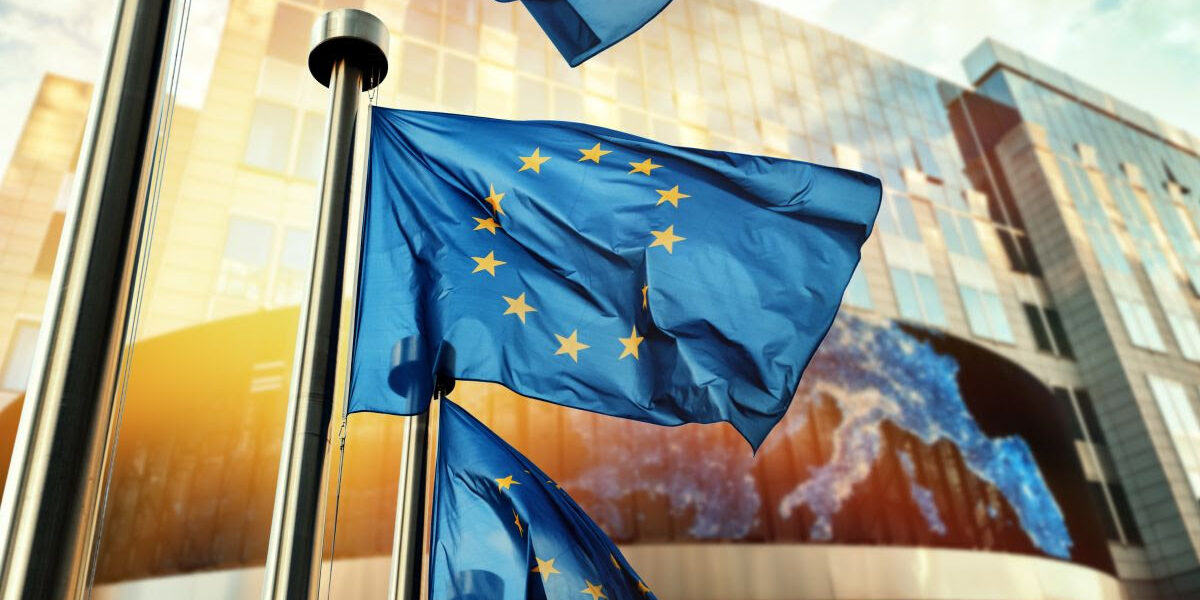During the three years of full-scale war, the economic image of our country in Europe has changed dramatically. From being an object of defense, Ukraine has turned into a strategic partner whose experience in high-intensity warfare has become the basis for new European standards.
This is stated in the study “Ukraine in the Eyes of Europeans: Analysis and Strategic Recommendations (2022-2025) ” (August, 2025), conducted by the NGO “Foundation for the Promotion of Democracy” with the support of the Hanns Seidel Foundation in Ukraine as part of the work of the Ukrainian Security Club.
Russia’s full-scale aggression has destroyed the pre-war “cooperative” security model, forcing the EU to move to the logic of deterrence and defense capacity building.
This is illustrated by the sharp increase in defense spending: in 2023, it reached €279 billion (approximately 1.6% of GDP), and for 2024, the European Defense Agency (EDA) forecasts €326 billion (approximately 1.9% of GDP). These are the highest figures ever recorded by the Agency.
The spring Eurobarometer-2025 shows stable support for defense issues among EU citizens:
- 81% support the Common Security and Defense Policy (CSDP).
- 78% are concerned about EU defense in the next five years.
- 77% consider Russia’s invasion a threat to EU security.
- 59% approve of EU funding for the purchase and supply of military equipment to Ukraine.
This support is “political oxygen” for governments that are increasing their defense budgets and institutionalizing aid to Kyiv.
Ukraine’s role in shaping a new security architecture
Ukraine plays a triple role in the EU’s security: deterring Russian aggression, serving as a testing ground for military technology innovation, and becoming a future co-producer of defense capabilities. Thanks to new financial instruments such as the Ukraine Facility, the focus is shifting from grants to long-term investments.
This demonstrates deep trust and the realization that Europe’s security and economic stability are impossible without Ukraine.
It is significant that Ukraine is no longer just an “object of defense”. Its experience has become the basis for standards of high-intensity warfare (air defense, drones, electronic warfare, cybersecurity). Kyiv’s role in European security is now threefold:
- Deterring Russia on the eastern flank.
- A testing ground for rapid innovation and integration of military technologies.
- A future co-producer of European defense capabilities, in particular through the BraveTech/EUDIS tools and EDF’s opening to Ukrainian companies.
The assistance architecture is moving in a structured way towards de facto integration: a network of bilateral security agreements (more than two dozen by the end of 2024, about 28 as of January 2025) and joint EU commitments from June 2024 create a new level of pre-alliance cooperation. In parallel, NATO is stepping up its supply coordination and long-term support in 2025.
All of this leads to a gradual convergence of defense systems, with the possibility of formal decisions in the future, which will depend on US policy and internal EU consolidation.
European security has already been de facto reformatted by the war: EU defense has “come home” and Ukraine has become a central element of the new order.
Changing economic perception of Ukraine
During the three years of war, Ukraine’s economic image in Europe has also been transformed: from a “recipient of aid” to a partner that has a specific value for the stability of the EU. This value lies in areas such as energy, critical raw materials, defense, digital services, and agri-logistics.
This shift is supported by the creation of a stable EU financial framework, including the Ukraine Facility and the Ukraine Investment Framework, as well as by the steps of major international financial institutions (IFIs). As of August 8, 2025, the EU has already disbursed more than €22 billion to Ukraine under the Ukraine Facility (including €6 billion bridge financing, €1.89 billion pre-financing, and four regular tranches of around €4.2 billion, €4.1 billion, €3.5 billion, and over €3.2 billion). This creates a predictable framework for the transition from grants to investments.
The RDNA4 estimate of recovery needs for the next ten years is $524 billion, which represents the scale of demand for capital, technology, and contracting. The key conclusion for investors is that despite the war, planning can be long-term, but with a phased entry into projects and a strong risk mitigation component. De facto, the emphasis is shifting from “maintenance costs” to “long-term investments” with conditions for reform.


Leave a Reply